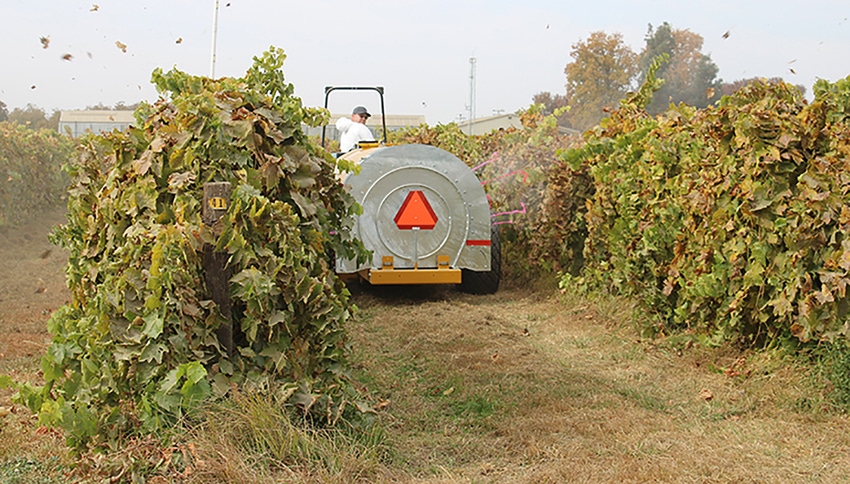
Once late season grape cultivars pass bud break and begin their active grow period, it’s like a welcome mat for pests and diseases. Break out the spraying equipment!
According to the University of California Agriculture and Natural Resource folks in Tulare County, “Success of a selected product doesn’t depend strictly on its active ingredient or even its mode of action, its efficacy is affected by when — and how — it’s applied with each application offering an opportunity to control a problem because spray can address potential pitfalls.”
With water (tested for proper pH) as a common carrier of pesticide to target, pesticide manufacturing formulation ranges between five and seven on the pH meter. Using a non-recommended pH can bring on chemical modification of the product along with an inability to control targeted pest or disease.
“Follow the label and perform corrections necessary to guarantee the effectiveness of the spray,” say the UCANR experts.
Another aspect of spray system involves equipment and the admonition of the right tool for the job, inspected and calibrated. High pressure forces the water/pesticide combination through a nozzle. Is it clean or clogged? Because of a high-pressure application, watch for any leakage and replace defective hoses.
It should go without saying that operators should be trained and properly protected.
Keep an eye on pressure gauges because incorrect pressure readings can result in unwanted spray dosage, higher or lower than desired. Over- or under-spray is often blamed on faulty nozzles that compromise the application, exceeding legal limits of a specific product or resulting in phytotoxicity. Over-spray of product beyond the recommended amount results in a needless and expensive operation.
How treatments are applied
How you apply what you apply also helps ensure a productive growing season. Nozzles should be directed at specific areas of interest, be it trunk, cluster, or canopy, and should be adjusted for drop size required for a particular application.
To select the proper nozzle, attach a 1 to 2-foot flagging tape to a nozzle and run the tractor in the field at desired speed with a fan. If the tape blows into the target area with proper coverage, you’ve got the right nozzle tool for the job.
Under the title “Spraying on Target is Spray at Work”, Kearney Agricultural Research and Extension Center Application Engineering Specialist Dr. Peter Ako Larbi in Fresno County, speaks to some of the basics, like maintenance, air volume and speed, and maximizing spray coverage.
Proper maintenance should be a given. “Your sprayer is made up of several components that work together to make it do what it’s designed to do and all components need to be maintained and kept well-cleaned to ensure proper function.”
Likewise, the vehicle for transporting spray droplets to the target and causing penetration into the canopy needs to function properly. “Air can be your friend or foe, depending on how you manage it. Airspeed from the outlet initially drops drastically and continues to reduce gradually with distance away from the sprayer” he says, “and airflow rates need to be managed to minimize spray loss beyond the target canopy.”
Maximizing coverage is a biggie. “Spray droplets on target, not beyond,” he advises. “Air speed and volume should be matched to canopy size and foliage density and nozzle size and configuration should be adjusted to ensure the correct amount of material is applied.”
For more news on pests, disease management and other issues affecting vineyards, subscribe to the bi-monthly newsletter The Grape Line.
About the Author(s)
You May Also Like




